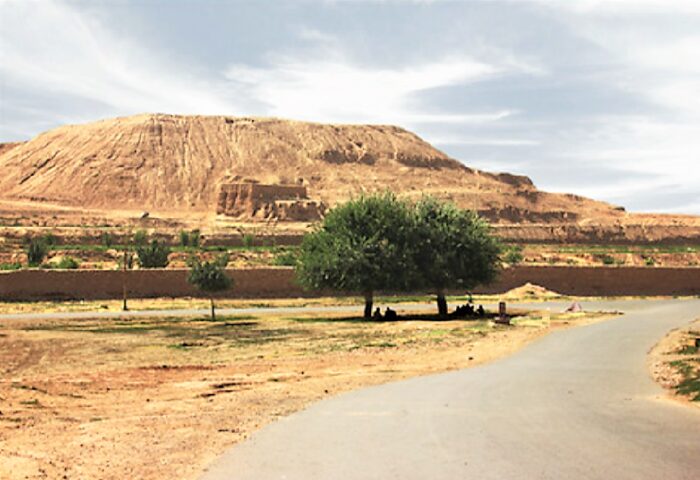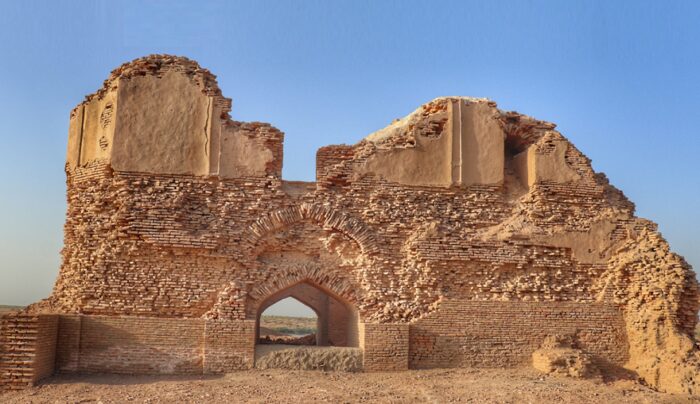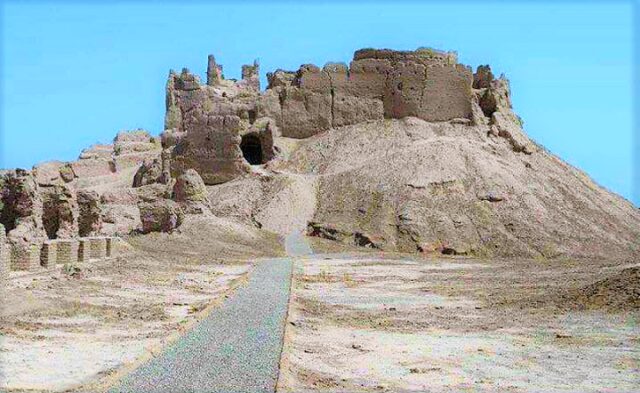Kalat Meeri Fort – A Grandeur of Turbat is also famously known as “The Fort of Punnu”. Around 5,000 years old, the historic site known as Meeri (Miri) Fort is situated in Turbat.
According to certain historians, the residence of a king was where they discovered gold, diamonds, and other priceless items inside the port.
In the Kech region, Meeri Kalat is situated 10–12 kilometres northwest of Turbat. Kalat is a historical town, formerly known as Qiqan. It is situated in the Kalat District, Balochistan province of Pakistan.
Kalat-e-Brahui and Kalat-e-Sewa names are used locally to refer to the District capital of Kalat. The Kalat is the capital of Kalat Khanate, formerly known as Qilat, which is roughly in the middle of Balochistan, Pakistan.
Read Also
Top 10 Popular Archeological Museums of Pakistan
With a two percent Hindu population, the majority of the population is Muslim. Additionally, a few Hindu Hindkowan traders have relocated to Kalat.
The Pakistani government has made attempts to make amends with Mir Suleman Dawood Jan, who currently holds the ceremonial title of Khan of Kalat. His son Prince Mohammed, who will succeed him as Khan of Kalat, is a supporter of Pakistan.
Climate
A cold desert climate (BWk) according to the Köppen scale (most widely used classification) system is present at Kalat.
Kalat’s yearly precipitation averages 163 millimeters and the average temperature is 14.1 °C.
The driest month is June, with just 1 millimeter of rainfall, while the wettest month is January, with an average of 36 millimeter. With an annual average temperature of 24.8 °C, July is the warmest month.
January has an average temperature of 3.4 °C, which is the coldest month. On January 20, 1978, the lowest temperature ever recorded in Kalat was 17 °C on June 19, 1977; the highest temperature was 38 °C.
History
It is a place with a long history. It was formerly known as Kalat-i-Seva after a Hindu ruler and Kalat-i Nichari, which links it to the Nichari Brahui Speaking tribes, which are widely considered to be the earliest branch of the native Brahois.

In honour of Sewa, a fabled Brahui hero, the town of Kalat is supposed to have been established by him and given the name Qalat-e Sewa. Before the arrival of Balochi-speaking tribes from the west brahui, speaking tribes arrived in the Kalat area from the east.
A sizable kingdom was founded by the Brohis in the 15th century, but it quickly fell into disorder and the area was briefly ruled by the Mughals. In 1666, the state of Kalat was established. When Naseer Khan I united the entire Baloch region under his flag, the Khanate as a sovereign state achieved its apex.
From the 17th century until the arrival of the British in the 19th century, the brahui-speaking Khans of Qalat ruled the region. Until the British intervened in the region in 1839, the state maintained its independence.
In 1876, a treaty was ratified that included Qalat in the British Empire. Over the years, the state’s controlled areas changed, but in the late 19th century, accords with British Agent Robert Sandeman allowed for its final establishment.
Read Also
12 Most Populous Cities of Pakistan in 2023
The Khan of Kalat apparently joined Pakistan’s realm in 1947. Qalat joined Pakistan in 1948 after the British left. Although the last Khan of Qalat was legally deposed in 1955, his descendants continue to hold the title. Mir Suleman Dawood Khan Ahmadzai is the current Khan of Qalat.
Construction
The massive fort that was constructed on a tall mound is now in ruins. The ruins and remnants of this old and ancient fort, known locally as Punnu Kalat, have been neglected over time and have been reduced to rubble. There are still visible fort walls and towers.
The original walls of this fort remain obscured, due to its placement on a high mound. Most likely, thousands of years ago, homes were housed in structures up to 10 meters high. Only the vestiges and remnants of the fort’s upper portion are currently visible.

In addition to using mud, stones, and wood, this fort was also built with wood. The fort’s roofs are made of wood, which you can see as you approach. The fort complex also contains the ruins of three wells, indicating that the locals were skilled in the techniques of mud fortification and stone carving thousands of years ago.
Given that the ketch river flows close to the “Meeri Kalat,” it is most likely that the stones and mud used to build the fort came from there. The evidence demonstrates that the fort was protected by these forts on all sides in order to keep outside intruders out.
There are palm groves close by, as well as remnants of the surrounding forts. The fort has been continuously occupied from about 2700 BC to roughly 100 years ago, according to excavations.
The Hoth tribe’s control over the fort is strengthened by local legends about Sassi and Punnu and the famous ruler Jalal Khan Hoth, who dominated the region in the 12th century.
According to Imran Shabbir, an archaeology professor at The University of Balochistan, the fort is 5500–6000 years old and has been inhabited by people at 12 separate times.
This mediaeval fort was governed by various monarchs and emperors who held absolute control during their respective eras. Although there are no historical records to support it, it is also probable that the Mongols, Arabs, Greeks, and Ghaznavids ruled this region at various points in history.
Read Also
Derawar Fort: The Great Elegance in Desert
Balochi tradition and poetry’s depiction of Sassi Punnu’s love affair reveals only a portion of the fort’s past. The fort was ruled by Mir Jalal Khan Hoth in the 12th century, based on local mythology and poetry.
Experts say that that it is not possible now to restore this fort to its previous state. The old civilisation and its artefacts can be preserved, nevertheless, by constructing a fort similar to this one out of the same materials that were used to build this one.
The government started making plans to reconstruct the Kalat fort two years ago, but work hasn’t started yet. Archaeologists claim that in order to rehabilitate Meeri Kalat, it is necessary to fence it off and finish the excavation needed to pinpoint the fort’s many historical eras.








